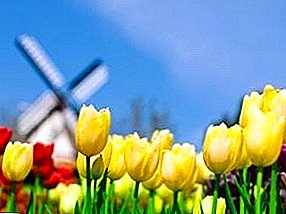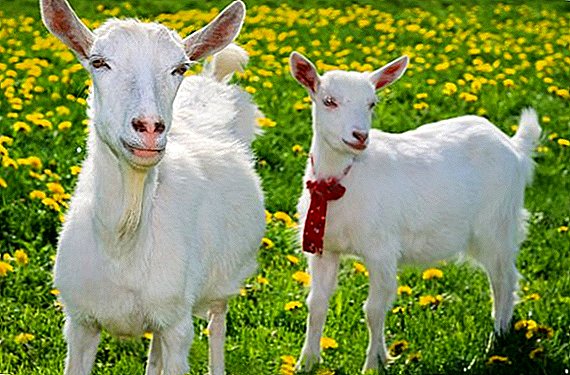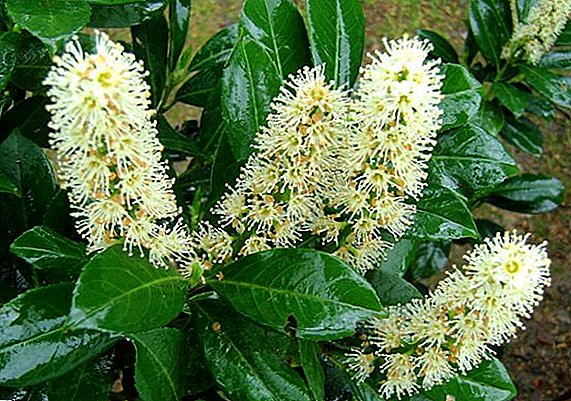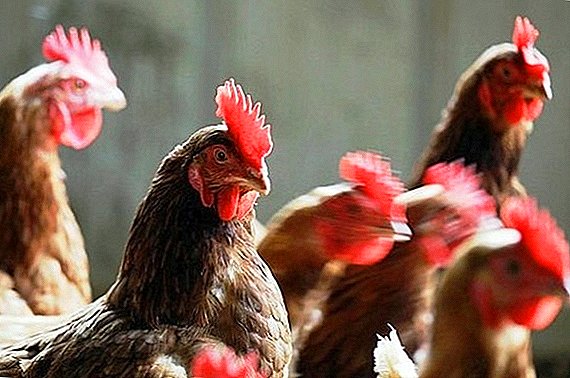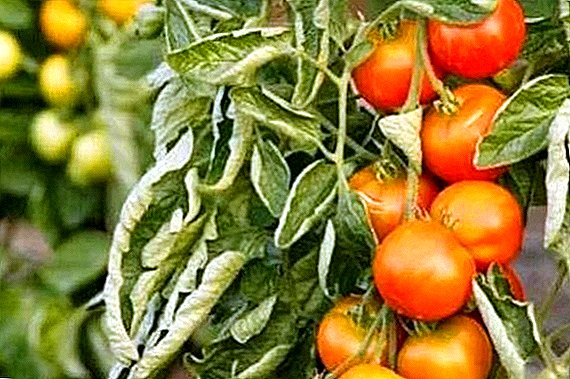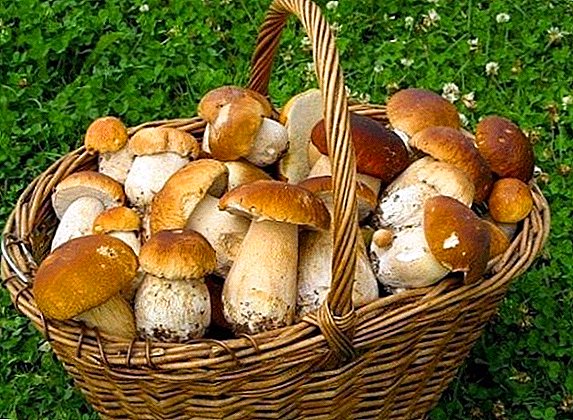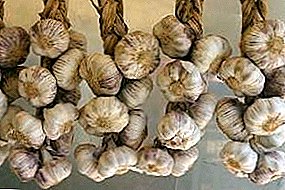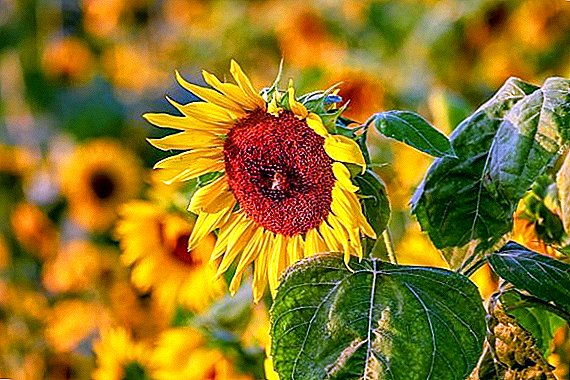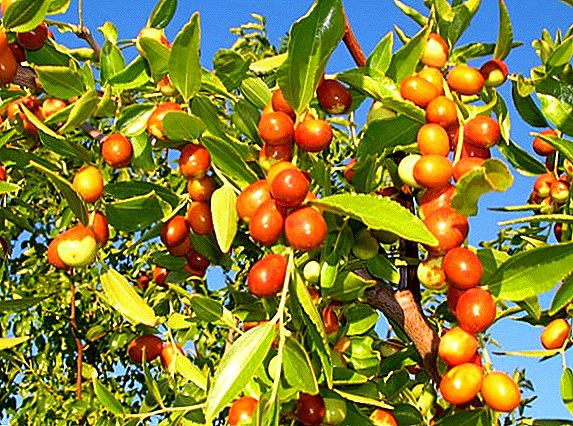 In areas of modern summer residents, it is increasingly possible to see exotic and unusual plants that not only perform a decorative function, but can also bring a useful harvest. Therefore, in this article we will talk about one of these plants, known immediately under several "names": zizifus, unabi and Chinese dates.
In areas of modern summer residents, it is increasingly possible to see exotic and unusual plants that not only perform a decorative function, but can also bring a useful harvest. Therefore, in this article we will talk about one of these plants, known immediately under several "names": zizifus, unabi and Chinese dates.
Jujube: Exotic Description
Like any other plant, unabi has its own peculiarities of cultivation and care, however, before proceeding to their consideration, you should become better acquainted with the Chinese dates.
Jujube is a subtropical fruit crop that has been continuously grown in China for over 6000 years. In that area, more than 400 varieties grow on an area of 200 thousand hectares, which is much more than the territory occupied by all fruit crops in Ukraine.
Did you know? The most useful fruits of unabi are deservedly those that grow in mountainous areas, where the soil is not rich in humus.
 India, Pakistan, Afghanistan, Algeria, Israel, Egypt and the Caucasus countries can boast of fairly large territories with such dates. In addition, recently they have been showing interest in them in the USA, Italy, Spain, France, Russia and Ukraine.
India, Pakistan, Afghanistan, Algeria, Israel, Egypt and the Caucasus countries can boast of fairly large territories with such dates. In addition, recently they have been showing interest in them in the USA, Italy, Spain, France, Russia and Ukraine.Jujube represented by a small tree (or a tall bush) with a height of no more than 5 meters. The crown is wide, spreading and has a very attractive shape. Bare, red-brown shoots have a knee-curved shape, with thin spikes located on curves up to 3 cm in length.
Unabi fruits are oblong, spherical or pear-shaped, 1.5 cm long and weighing up to 50 g. Their color can be very different: from light brown to dark brown. The pulp of the drupe (namely, the drupe is the fruit of zizifus) is rather dense and has a sweet-sour or sweet taste. In general, both in taste and in color, the fruits of exotus resemble the usual apple drying, although they are valued for the multitude of useful substances that make up their composition (especially potassium and magnesium should be distinguished).
They can be used both fresh and made from zizifus: process in mashed potatoes, marmalades, compotes or candied fruits. They are also widely used in the confectionery industry. In the dried form of the fruit can be more than a year, without losing all of its beneficial properties.
However, in order to maximize this process, you need to know exactly how to properly store the fruits of ziziphus. For example, the most common form of storage of a given plant is dried or dried fruit placed in a tightly closed glass jar, left in a room with normal room temperature (up to +25 ° C). Fresh, they can be quietly left in the fridge for a whole month. 
Important! Since unabi fruits do not have wax deposits, they are easy to dry in the sun without any additional preparation. In this form, they contain up to 5% of organic acids, 15-25% of sugars, 1.5-3% of proteins, up to 2% of starch, 3-4.5% of fats and up to 1.1% of pectins.Dried and fresh jujube fruits are successfully used in the treatment of colds, problems with the kidneys, liver, stomach and heart.
Optimum timing and choice of landing site
Having figured out what ziziphus is, and firmly deciding to grow this plant in your own area, you need to know what is best to perform landing in early spring, because during autumn plantings there is a serious likelihood of freezing of unabi with the onset of early frosts.
Important! A characteristic feature of the Chinese date is its slow growth in the first year after planting, therefore, the formation of the crown can begin no earlier than one year.Zizifus loves light very much and grows very poorly in shady areas, and flowers always turn out to be empty flowers. That is why for unabi seedlings it is worthwhile to select a place that is hidden from drafts, but well accessible to the sun's rays.
For spring planting of Chinese dates, the upper and lower parts of the southern and south-western slopes, as well as flat and protected areas are ideal. The distance between adjacent plants should not be less than 2-3 m.
Preparatory work before landing
Despite the fact that unabi is an exotic plant for us, growing it will not be difficult and care for it is simple. Unabi is quite unpretentious to the composition of the soil, but responds to the additional fertilizer with a bountiful harvest.  Therefore, before planting the plants, it is necessary to prepare pits with a size of a meter to a meter in advance and introduce mineral fertilizers together with diluted cow manure (it can also be mixed with the soil).
Therefore, before planting the plants, it is necessary to prepare pits with a size of a meter to a meter in advance and introduce mineral fertilizers together with diluted cow manure (it can also be mixed with the soil).
Important! Before planting zizifus seedlings, it is imperative to bear in mind that the unabi crown becomes rather sprawling during growth, which means that it is better to adhere to the 3x4 planting scheme.
Planting of jujube seedlings on the site
When choosing Chinese-saplings, give preference to early frost-resistant varieties that are planted from March to May or from October to November. Young plants are buried in the pit by no more than 10 cm, and after planting they water abundantly.
It is also important to bear in mind that for the best survival of a Chinese date, zizyphus agrotechnology involves mulching the soil under young plants, which are replaced by digging. When performing mulching, organic matter is periodically introduced into the ground.
 After placing the seedling in a fertilized pit, tightly fill it with soil and tamp. After that, all the young trees must be carefully watered.
After placing the seedling in a fertilized pit, tightly fill it with soil and tamp. After that, all the young trees must be carefully watered.
You can even use a seedling that was independently grown from a stone, only in this case you need to understand that this breeding option is more complicated and troublesome.
Zizyphus Pollination
Zizifus is a cross-pollinated plant that is not able to bear fruit on its own. Therefore, to obtain a crop, it is necessary to plant several varieties of unabi at once on your own plot. The closer they are to each other (of course, taking into account all the requirements), the easier it will be to pass the pollination.
Jujube care
Proper planting is only half the success, but you still have to provide appropriate care for zizifus. In fact, this is not such a troublesome thing, but the main thing is to guarantee the plant a timely watering, fertilizer and weed removal.
Watering should be done rarely and in small quantities, especially when there is no rain for a long time. Drying the soil is bad for unabi and can lead to a rather meager harvest.
Due to the structure of its root system, ziziphus not only has a high level of frost resistance, but also easily cope with drought. At the same time, we should not forget that excessive moisture is detrimental to the plant, so watering should be dosed. Moreover, in June, when the fruit begins to grow, the plants need dryness, so watering should be completely canceled.  With the onset of the first growing season, you can begin to feed zizifus. It is performed twice per season and often use "Crystal", soluble in water at the rate of 15-20 g per 10 liters of water. With the onset of full fruiting, the number of dressings is increased by adding ready-made mineral fertilizers.
With the onset of the first growing season, you can begin to feed zizifus. It is performed twice per season and often use "Crystal", soluble in water at the rate of 15-20 g per 10 liters of water. With the onset of full fruiting, the number of dressings is increased by adding ready-made mineral fertilizers.
Zizyphus breeding is very difficult, and often seeds are used for plant breeding on their land, which sprout and germinate very poorly. In addition, you can perform the reproduction of exotic and with the help of budding, but it is quite a challenge. Therefore, many gardeners have resorted to the purchase of ready seedlings from proven experts.
Care for unabi provides for the timely cleaning of the site from the emerging weeds, which are extremely undesirable neighbors of this plant.
Before the arrival of winter cold young seedlings spud, and their tops wrapped in non-woven material. Adult plants are subject to warming only in those regions where the temperature in winter falls below -35 ° C.
Trimming and forming crown unabi
Like many other plants, Chinese date needs to form a crown, but it is better to perform this procedure 1-2 years after rooting, which will help to avoid unabi injuries. 
Most often, the crown is given a cup shape with the help of 4-5 main branches, which are placed around the trunk. In this case, the main shoot should be cut to 15-20 cm, and other branches shortened on the same level with it. During the growth and formation of zizyphus, sanitary pruning of the branches that grow inward is carried out periodically. A beautifully designed and elegant plant will adorn any garden and will be able to delight you with its flowering for a long time.
Fruiting: harvesting jujube
The period of fruiting in the seedlings of the unabi begins only 4–5 years after sowing the seeds, and the productive period in plants begins only 10–15 years. However, with good care, even a raised “pectoral berry” from the bone will begin to form the ovary as early as the 2-3rd year, while the varietal seedlings, subject to high-quality rooting, can also bring berries in the first year after planting in the open ground.
Zizifus is dissolved late, which allows it to avoid residual spring frosts. There are a lot of flowers, and from them comes a very pleasant, sweetish aroma that attracts a large number of insects. Duration of flowering period is about 60 days. Despite the fact that some of the flowers remain unspotted, when fruiting, unabi can produce up to 60 kg of berries (from one adult plant).
The non-simultaneous flowering of zizifus affects the ripening of fruits, which is also uneven. In fine, warm autumn fruit picking is often delayed until the end of October (starts in September).
Did you know? The weight of the zizifus fruit can vary from 3 to 20 g.If for fresh consumption it is necessary to wait for the full ripening of the fruits of zizifus, then for processing they are removed from the branches when a light brown topcoat appears on a third of the surface. In general, the fruits of unabi can not be removed long enough, leaving them hanging on a tree.
For a neat removal, special “comb” is used, with teeth through 1 cm. With this “comb”, zizifus fruits are scoured onto a film, after which they are separated from fruitful shoots and leaves. Up to 30 kg of fruits are collected from one tree. The dried crop can be stored for more than two years. 
Of course, for planting at the site you need to have varietal plants, and it is better to buy Zizyphus, among the main properties of which is listed and early maturation. Only such unabi not only successfully grow in our climate, but also are able to actively bear fruit before the first cold autumn. It is precisely such varieties that include the large-fruited variety of Moldavia selection called Mori Jer. Not less attention should be paid to a variety with an average term of ripening of fruits called Vakhsh (the weight of its fruits reaches 14-16 g). However, no matter what plant you choose, you should always remember the basic rules for growing such exotic plants.


